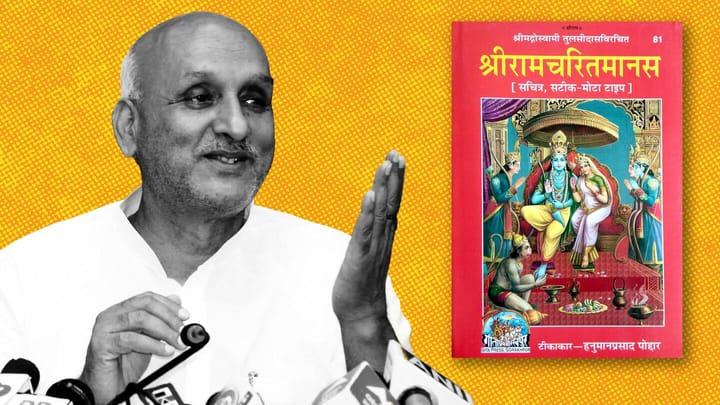Tagged: Bihar, Brahmin, caste, Castes, Castesystem, Delhi, hindu, Hinduism, India, Politicians, politics, Ram, Ramcharitmanas, sanatan, sanatandharm, SanatanDharma, Shriram, Shudra, Tulsidasji
- This topic has 0 replies, 1 voice, and was last updated by .
-
AuthorPosts
-
September 17, 2023 at 12:54 am #1400Up::1
The caste system has been criticised for perpetuating social inequality and injustice in Kalyug. Efforts to address caste-based discrimination through legal and social reforms in India have been significant. This involves the social reform movements of Mahatma Gandhi and Dr. B.R. Ambedkar, as they have played significant roles in challenging caste-based discrimination and advocating for the rights of marginalised communities. Politicians from different parties are trying hard to give these the worst angle. With zero knowledge of the scriptures, people nowadays make statements involving Sanatan Dharm and the holy Granths worshipped in Sanatan.

Recently, the Education Minister of Bihar, Chandra Shekhar ji, questioned and mocked a shlok from Ramcharitmanas. The Education Minister, after reading ‘पूजहि विप्र सकल गुण हीना, शूद्र न पूजहु वेद प्रवीणा‘, asked in a questioning tone, “What is this? Doesn’t it say something wrong about caste? The Education Minister even said that there is potassium cyanide in Ramcharitmanas, and as long as it exists, he will continue to oppose it. Though he is being trolled a lot by many of the politicians and “SANATANIS” from all over the nation, there is something that really has to be answered. This “पूजहि विप्र सकल गुण हीना, शूद्र न पूजहु वेद प्रवीणा” has to be answered.
“पूजहि विप्र सकल गुण हीना, शूद्र न पूजहु वेद प्रवीणा“. Meaning:- Tulsidas ji says that “No matter how much knowledge a Brahmin lacks, he must be worshipped, and no matter how knowledgeable a Shudra is, he can be respectable but can never be worshipped“. A Brahmin is worshipped not just because of the knowledge he has but also because of his karma. A Brahmin may not be very knowledgeable, but his karma says it all, as a Brahmin will never perform any of his karma as a shudra. In the same way, a Shudra cannot be worshipped because of his karma, as a Shudra will perform all his karma as a Shudra and not as a Brahmin.
When it comes to Ramcharitmanas, we all remember the story of Shri Ram, Shabri, and Bor. The story of Shabri and her devotion to Lord Rama illustrates the idea that the Divine values pure and sincere devotion above all else (even caste). It emphasises that one’s love and devotion are more important than external rituals or offerings and that true devotion comes from the heart. This story has been cherished as a symbol of unwavering faith and devotion in Sanatan.
In conclusion, it is essential to emphasise that a single example cannot encapsulate the complexity of Hindu Granths and their teachings regarding the caste system. While this particular example demonstrates a more inclusive and flexible perspective, it is crucial to recognise that Hinduism encompasses a vast array of beliefs, interpretations, and practices. The caste system has evolved over millennia, and its interpretation varies among individuals, communities, and regions. Therefore, it is imperative to approach the subject with an open mind and a deep respect for the diversity of beliefs within Sanatan Dharma. Before making any statements that may lead to doubts or insults regarding Sanatan Dharma or its teachings on the caste system, one should engage in thorough research, engage in respectful dialogues with knowledgeable individuals, and seek to understand the nuances of this ancient and complex religion.
Attachments:
You must be logged in to view attached files. -
AuthorPosts
- You must be logged in to reply to this topic.